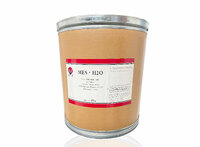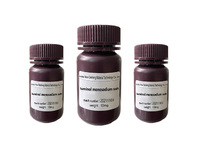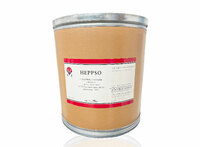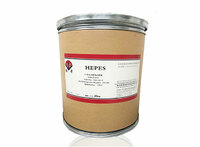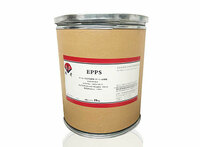3-AMINOPHTHALHYDRAZIDE CAS NO.521-31-3
Product Quick Detail
- FOB Price
- USD $50.00 / Piece
- Minimum Order
- 1
- Place Of Origin
- Ezhou City, Hubei Province, China
- Packaging
- 10mg, 10g, 50g, 500g, 1L, 20L, 20kg/box, 25kg/barrel
- Delivery
- 3-30 days
Specifications
Luminol, also called 3 aminophthalic hydrazide and its derivatives are redox-type chemiluminescence reagents, which can be oxidized by various oxidants under alkaline conditions, such as H2O2,
K2S2O8, etc., and a chemiluminescence reaction will occur to emit blue light. Because it is a relatively stable synthetic organic compound, luminol (3-aminophthalhydrazide) is widely used in
criminal investigation, bioengineering, chemical tracing, research and development, and other fields.
Luminol (3-Aminophthalhydrazide) Powder Details
Luminol, also known as fluorescence amino, with the chemical name of 3-amino-phthalic acid hydrazide, is a commonly used chemiluminescence reagent. The colour of 3 aminophthalic-hydrazide is best
white, followed by milky white, and then light yellow. The 3-aminophthalhydrazide developed and produced by Desheng is a milky white powder. The luminol powder for sale is easily soluble in lye and
dilutes acid. It is almost insoluble in water and hardly soluble in alcohol. It will emit light only when it is used in a solution. At the same time, we need to use a light-shielding and
well-sealed container when using this product. The temperature should be kept at 0-5 °C, and attention should be paid to avoiding light and moisture, ensuring the product testing quality is more
accurate and higher.
Luminol (3-Aminophthalhydrazide) Powder Detection Method
Catalyst Rapid Luminescence Method
Because under normal circumstances, the chemiluminescence reaction between hydrogen peroxide and the luminol luminescence system is very slow, but after adding some catalysts that will not affect
the entire detection system, the reaction will become very fast. Commonly used luminol catalysts are metal complexes: hemoglobin, peroxidase, and transition metal compounds: Fe3+, Fe2+, Mn2+, Cr2+,
etc.
Indirect Assay of Inhibitors
In addition to the above-mentioned methods of accelerating detection by catalysts, some organic substances can be used as inhibitors to inhibit the chemiluminescence of 3-aminophthalhydrazide, such
as reducing compounds containing phenolic hydroxyl groups, which can react with oxidants during the reaction process, reducing The concentration of the oxidant is reduced, the chemiluminescence
intensity is reduced, and this type of organic substances is indirectly determined.
Liquid Chromatography (LC) Separation And Detection Method
Derivatives of luminol such as isoluminol (ABEI) are labeled on carboxylic acids and ammonia compounds, separated by high-performance liquid chromatography (HPLC) or liquid chromatography (LC), and
then combined with carboxylic acids under basic conditions. The hydrogen peroxide-potassium ferricyanide reaction was used for chemiluminescence detection. Other separation methods can also be
used, such as labeling the newly synthesized chemiluminescence reagent isoluminol isothiocyanate to yeast RNA, separating by centrifugation and dialysis, and then performing chemiluminescence
detection.
Desheng Luminol (3-Aminophthalhydrazide) Powder For Sale Preparation Method
A method for the synthesis of luminol powder for sale developed by Desheng obtained a patent. Compared with the prior art, it has obvious advantages and beneficial effects.
The method realizes that the three-step reaction is completed in the same pot, the intermediate product does not need any purification treatment, and finally, the product is directly obtained.
The method has a simple synthetic route, mild reaction conditions, and simple operation, and the required reagents are all conventional reagents, the required equipment is all conventional
equipment, and the price is low. Therefore, the cost required for the synthesis is low, and it is suitable for industrialized large-scale production.
The yield and purity of luminol and isoluminol synthesized by the method are high, the yields of luminol and isoluminol are both above 80%, and the HPLC (high-performance liquid chromatography)
purity is above 98%, can fully meet the needs of industrial production of products and the needs of the market.
Luminol Applications
Forensic Science
Luminol, or 3-aminophthalhydrazide is commonly used in forensics as a diagnostic tool to detect bloodstains. Most crime scene investigations (called criminology) are based on the fact that without
a trace, it won't go away, and that tiny blood particle will stick to most surfaces for years. Luminol powder reveals these traces through a luminescent chemical reaction between several chemicals
and hemoglobin, an oxygen-carrying protein in the blood.
Nucleic Acid Determination
Luminescent oxygen channel immunoassay (LOCI) type detection methods are also suitable for detecting single nucleotide polymorphism types. Other luminescent nucleic acid-based detection methods
include infectious disease detection combined with nucleic acid amplification techniques, such as polymerase chain reaction, such as telomeric DNA, herpes simplex, Lassa fever virus, and
Trichomonas vaginalis.
Oncology
The HRP molecule catalyzes the luminescent reaction between luminol and H2O2 to generate an enhanced luminescent signal. Under optimal conditions, the luminescence intensity depends on the surface
coverage of HRP molecules (related to the concentration of p53 protein) and increases linearly with the concentration of p53 protein between 0.01-0.5 nM. The estimated detection limit was 3.8 pM.
This assay is a successful method to detect p53 protein in normal and cancer cell lysates.
Genetic Testing
Another successful research application of CL is the detection of the expression product of a reporter, a gene developed as a replacement for the traditional chloramphenicol acetyltransferase gene.
Chemiluminescent dioxetane, luminol derivative type substrates can also be used to detect and quantify the gene expression products of placental alkaline phosphatase, β-galactosidase, and
β-glucuronidase. These assays are sensitive and have linear ranges over several orders of magnitude.
Cell Chemiluminescence
Existing cell localization methods are not sufficient. Therefore, luminol- or luminol-enhanced luminescence from polymorphonuclear neutrophils or phagocytes or biological fluids (eg, whole blood)
is an important tool for cell-based studies, including respiratory burst studies.
Protein Quantification
In routine laboratory research experiments, proteins are quantified using Western blotting. Western blotting is widely used to study steady-state protein levels, biosynthesis and turnover rates,
mutational effects on protein stability, and the effects of pharmacological compounds on protein expression.
Environmental Monitoring
Luminol powder can be used for the determination of metal ions, and methods for determining iron ions in seawater have been established and used for marine environmental monitoring.
Drug Analysis
The myoglobin-luminol system was used to detect the drug Aniracetam, which is used in the treatment of the central nervous system. The myoglobin-conjugated complex of aniracetam catalyzes the CL
reaction of luminol powder, which is enhanced compared to the CL reaction without aniracetam. This method was also used to determine cefazolin sodium in injections and human urine.
Precautions While Using 3-Aminophthal Hydrazide Luminol Powder
Luminol fluoresces in the presence of iron, ferrous alloys, horseradish, or certain bleaching agents. So if the crime scene had been thoroughly treated with bleach, the fluorescence from luminol
would firmly mask the presence of any bloodstains.
Luminol powder for sale can detect animal blood and a small amount of blood in urine, so if the room to be tested contains urine or animal blood, the test results will be biased.
Luminol (3 aminophthalhydrazide) reacts with excrement, and the light emitted is the same as that emitted by the reaction with blood.
Luminol (3 aminophthalhydrazide) may interfere with other assays, however, luminol does not interfere with DNA extraction.
The use of luminol powder needs to be in a dark environment, otherwise, the fluorescence is difficult to identify.
Luminol (3 aminophthalhydrazide) has a limited time to emit light, so take the time to take photos and record them.
- Country: China (Mainland)
- Founded Year: 2017
- Address: C8-2, Optics Valley United Technology City, Gedian Development Zone, Ezhou City, Hubei Province, China
- Contact: Vicky Zhao


